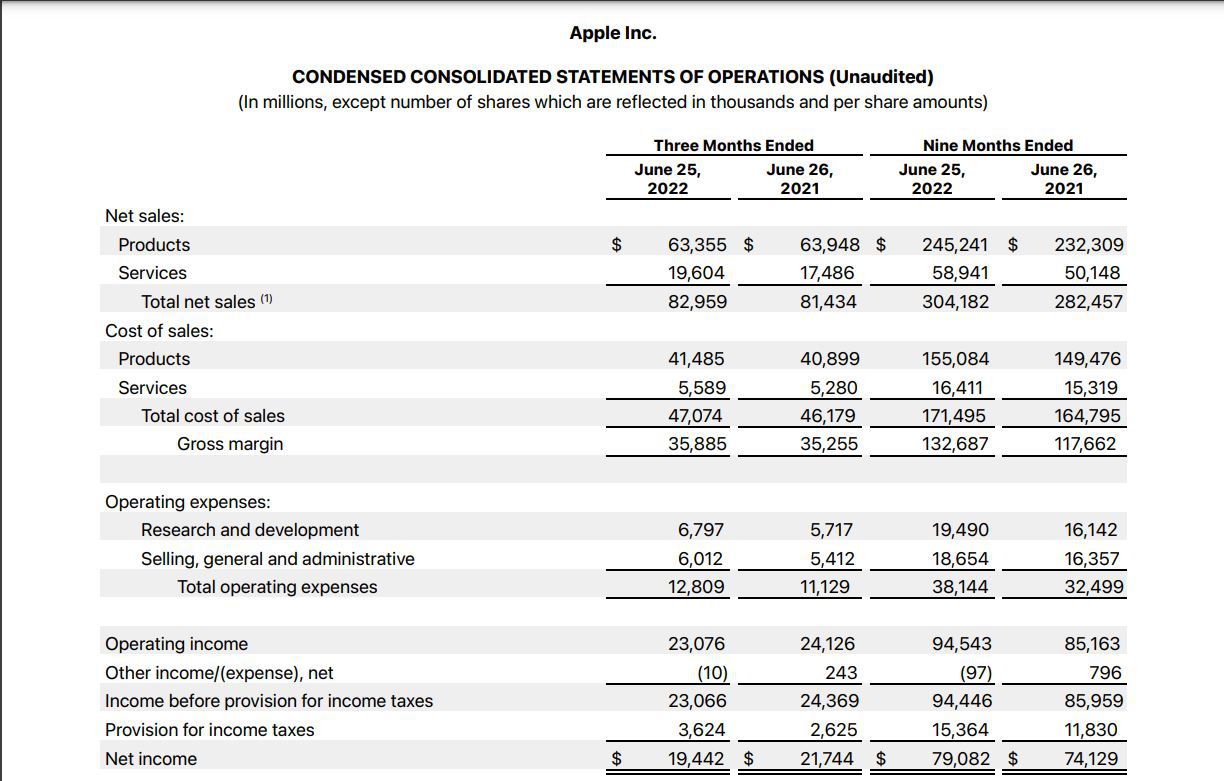

Finance
What Does KPI Stand For In Accounting
Published: October 9, 2023
Discover the meaning of KPI in accounting and its importance in finance. Gain insights into key performance indicators and their role in financial analysis.
(Many of the links in this article redirect to a specific reviewed product. Your purchase of these products through affiliate links helps to generate commission for LiveWell, at no extra cost. Learn more)
Table of Contents
Introduction
Welcome to the world of accounting, where numbers tell the story of an organization’s financial health. In today’s business landscape, simply recording financial transactions is no longer enough. Companies need to analyze these numbers and gain insights that can help them make informed business decisions. This is where Key Performance Indicators (KPIs) come into play.
KPIs are an essential tool for measuring and evaluating the success of an organization. They provide a clear and quantifiable way to assess performance and track progress towards specific goals. In the realm of accounting, KPIs serve as a guiding framework to assess various financial metrics and indicators, enabling businesses to understand how well they are managing their money and resources.
Whether you are a small business owner or a CFO of a large corporation, understanding and utilizing KPIs in accounting is crucial for effective financial management. In this article, we will delve into the world of KPIs in accounting, exploring their definition, importance, examples, and how to set them.
So, let’s dive in and explore the world of KPIs, how they can transform your accounting practices, and ultimately help you drive business success!
Definition of KPI
Key Performance Indicators (KPIs) are measurable metrics that quantify the performance and progress of an organization in relation to its strategic goals. These indicators are used to track the success or failure of specific activities and provide insights into the overall health and effectiveness of a business.
In the context of accounting, KPIs are financial and non-financial measurements that offer a snapshot of an organization’s financial performance. They provide a tangible way to gauge success, identify areas for improvement, and make data-driven decisions.
KPIs in accounting can encompass a wide range of metrics, depending on the specific needs and objectives of the organization. Some common KPIs in accounting include revenue growth, profit margins, return on investment (ROI), accounts receivable turnover, and inventory turnover.
What sets KPIs apart from other financial metrics is their alignment with strategic goals. They are chosen based on their relevance to the overall objectives of the organization and their ability to provide actionable insights. KPIs should be specific, measurable, attainable, relevant, and time-bound (SMART).
For example, a retail company may consider customer satisfaction as a key KPI in accounting. They can measure customer satisfaction through surveys or feedback forms and track changes over time. This KPI provides valuable insights into the effectiveness of their service and helps identify areas where improvements are needed.
It’s important to note that KPIs should not be viewed in isolation. They are part of a larger performance management framework, where multiple indicators are analyzed together to gain a comprehensive understanding of the organization’s performance. The selection of KPIs should be tailored to the specific needs and objectives of the business, ensuring that they align with the overall strategy.
By utilizing KPIs in accounting, organizations can measure their financial health, identify areas for improvement, and make informed decisions that drive growth and profitability.
Importance of KPI in Accounting
KPIs play a vital role in modern accounting practices, offering numerous benefits to organizations of all sizes and across various industries. Let’s explore the importance of KPIs in accounting:
1. Performance Measurement:
KPIs provide a quantitative measurement of an organization’s performance, allowing businesses to assess their financial health and track progress towards their goals. These metrics help in evaluating the effectiveness of financial strategies, identifying areas of improvement, and making data-driven decisions.
2. Goal Alignment:
KPIs in accounting align financial activities with the strategic objectives of the organization. By setting specific KPIs, businesses can ensure that their financial efforts are in sync with their overall goals and objectives. This alignment fosters a consistent focus on key financial metrics and facilitates better decision-making at all levels of the organization.
3. Performance Evaluation:
KPIs enable organizations to evaluate the performance of various departments, teams, and individuals within the accounting function. With clear and measurable KPIs, managers can identify top performers, reward exemplary work, and address areas in need of improvement. This evaluation helps in optimizing resource allocation and driving continuous improvement.
4. Early Warning System:
KPIs act as an early warning system, alerting businesses to potential financial issues or anomalies. By monitoring relevant KPIs, organizations can identify negative trends or deviations from expected performance early on. This allows them to take corrective actions and mitigate risks effectively, preventing larger financial problems down the line.
5. Benchmarking and Industry Comparison:
KPIs in accounting can be used to benchmark an organization’s performance against industry standards and competitors. By comparing key financial metrics like profit margins, asset turnover, or debt ratios, businesses can identify areas where they excel or lag behind. This information helps in setting realistic targets, identifying best practices, and staying competitive in the market.
6. Investor and Stakeholder Communication:
KPIs provide a transparent and measurable way for organizations to communicate their financial performance to investors, stakeholders, and external parties. By presenting relevant KPIs in financial reports and presentations, businesses can build trust, demonstrate progress, and attract potential investors or partners.
In summary, KPIs in accounting are essential for performance measurement, goal alignment, performance evaluation, risk management, benchmarking, and effective communication with stakeholders. By leveraging these metrics, organizations can optimize their financial management, make informed decisions, and drive long-term success.
Examples of KPIs in Accounting
KPIs in accounting can vary depending on the nature of the business, its industry, and specific strategic goals. Here are some common examples of KPIs in accounting:
1. Revenue Growth:
This KPI measures the increase in total sales revenue over a specific period. It provides insights into the organization’s ability to generate income and indicates the effectiveness of sales and marketing efforts.
2. Gross Profit Margin:
This KPI calculates the percentage of revenue remaining after deducting the cost of goods sold. It indicates the efficiency of operations and profitability by measuring how effectively the organization manages its direct costs.
3. Net Profit Margin:
This KPI measures the percentage of profit remaining after deducting all expenses, including costs of goods sold, operating expenses, and taxes. It provides insights into the organization’s overall profitability and financial health.
4. Return on Investment (ROI):
ROI is a financial metric that measures the profitability of an investment relative to its cost. This KPI indicates the organization’s ability to generate returns on its investment and helps in evaluating the effectiveness of capital expenditure decisions.
5. Accounts Receivable Turnover:
This KPI determines how efficiently an organization collects payments from its customers. It measures the number of times accounts receivable are collected and converted into cash within a given period, providing insights into cash flow management.
6. Inventory Turnover:
This KPI calculates how quickly inventory is sold and replenished. It measures the efficiency of inventory management, helping organizations optimize their purchasing and storage practices to minimize costs and maximize profitability.
7. Debt Ratio:
This KPI compares the organization’s total debt to its total assets, indicating the proportion of assets financed by debt. It helps in assessing the organization’s financial stability and ability to manage its debt obligations.
8. Cash Conversion Cycle:
This KPI measures the time it takes for a company to convert its investments in inventory and other resources into cash. It provides insights into the efficiency of working capital management and cash flow optimization.
9. Customer Acquisition Cost (CAC):
This KPI calculates the average cost incurred to acquire a new customer. It helps in evaluating the effectiveness of marketing and sales strategies and determining the return on investment for customer acquisition efforts.
10. Employee Productivity:
This KPI measures the output and efficiency of the accounting department or individual employees. It can be measured by the number of financial transactions processed, invoices managed, or reports generated per employee.
These are just a few examples of KPIs in accounting. The selection of KPIs should be tailored to the organization’s specific needs and objectives, ensuring they align with strategic goals and provide meaningful insights into financial performance.
How to Set KPIs in Accounting
Setting effective KPIs in accounting requires careful consideration of the organization’s goals and objectives. Here are some steps to help you set KPIs in accounting:
1. Define Clear Objectives:
Start by clearly defining the objectives that you want to achieve through your accounting activities. These objectives could be increasing profitability, improving cash flow, reducing costs, or enhancing financial transparency. Ensure that your objectives are specific, measurable, achievable, relevant, and time-bound (SMART).
2. Identify Key Financial Metrics:
Identify the key financial metrics that align with your objectives. These metrics should accurately reflect the performance and health of your accounting function. Examples could include revenue growth, profit margins, cash conversion cycle, or accounts receivable turnover. Choose metrics that are meaningful and relevant to your business.
3. Consider Industry Benchmarks:
Research industry benchmarks and standards to identify what is considered “good” performance in your industry. This will help you benchmark your own results and set realistic targets for your KPIs. Look for published reports, industry associations, or consulting firms that provide benchmarking data.
4. Establish Baseline Data:
Gather baseline data for the selected financial metrics. This will provide a starting point for comparison and allow you to track progress over time. Use historical financial data or conduct an initial assessment to establish a baseline for each KPI. Ensure that your data is accurate and reliable.
5. Set Targets:
Set specific targets for each of your KPIs based on your objectives and industry benchmarks. These targets should be challenging yet achievable. Consider the time frame within which you want to achieve these targets and make sure they align with your overall business goals.
6. Involve Relevant Stakeholders:
Involve relevant stakeholders, such as the CFO, finance team, and department heads, in the process of setting KPIs. Their input and expertise will help ensure that the selected metrics are relevant and aligned with the overall strategic goals of the organization.
7. Track and Monitor Progress:
Implement a system to track and monitor the progress of your KPIs. This can involve regular reporting, use of financial management software, or assigning dedicated individuals to track and analyze the data. Regularly review and analyze the results to identify trends, make adjustments if necessary, and take appropriate action to address any issues or deviations.
8. Continuously Improve:
Regularly review and evaluate your KPIs to ensure their relevance and effectiveness. As your business evolves, your KPIs may need to be adjusted to reflect changing goals or market conditions. Continuously seek feedback from stakeholders and look for ways to improve your accounting processes and performance.
Remember that setting KPIs in accounting is a dynamic process. Be flexible and willing to adapt as needed to ensure that your KPIs remain relevant and effective in driving your organization’s financial success.
Benefits of Using KPIs in Accounting
The use of Key Performance Indicators (KPIs) in accounting provides numerous benefits to organizations. Let’s explore some of the key advantages of using KPIs:
1. Improved Decision-Making:
KPIs provide a clear and quantifiable way to assess financial performance. By monitoring key financial metrics, managers can make more informed decisions regarding resource allocation, investments, pricing strategies, and cost control. KPIs help ensure that decisions are based on solid data and align with the organization’s goals.
2. Enhanced Financial Transparency:
KPIs promote financial transparency within an organization. By tracking and reporting key financial metrics, stakeholders gain visibility into the financial health and performance of the business. This transparency fosters trust among investors, lenders, and other stakeholders, increasing their confidence in the organization’s financial management practices.
3. Increased Accountability:
By setting specific KPIs, organizations establish clear performance expectations for individuals and teams within the accounting function. KPIs create a sense of accountability, motivating employees to achieve their targets and perform at their best. This leads to improved productivity, efficiency, and overall performance.
4. Better Resource Management:
KPIs help organizations optimize their use of resources. By monitoring key financial metrics, businesses can identify areas of inefficiency or wastage and take corrective actions. This leads to improved cost control, effective cash flow management, and better allocation of resources to areas that drive growth and profitability.
5. Early Detection of Financial Issues:
KPIs serve as an early warning system, providing visibility into potential financial issues or risks. By tracking key metrics, organizations can identify negative trends or deviations from expected performance early on. This allows them to take proactive measures to mitigate risks, address issues, and avoid major financial problems.
6. Performance Evaluation and Incentives:
KPIs enable objective evaluation of individual and team performance within the accounting function. By aligning KPIs with performance evaluations, organizations can reward top performers, identify areas for improvement, and provide targeted training and development opportunities. This fosters a culture of continuous improvement and motivates employees to strive for excellence.
7. Facilitation of Strategic Planning:
KPIs provide valuable insights that inform strategic planning and goal setting. By analyzing key financial metrics, organizations can identify areas of strength and weakness, set realistic targets, and create actionable plans for improvement. KPIs help align financial activities with the overall strategic objectives of the organization.
8. Benchmarking and Performance Comparison:
KPIs enable organizations to benchmark their performance against industry standards and competitors. This comparison helps identify areas of competitive advantage, areas for improvement, and best practices to emulate. It provides valuable market intelligence and insights for strategic decision-making.
In summary, using KPIs in accounting leads to improved decision-making, enhanced financial transparency, increased accountability, better resource management, early detection of financial issues, performance evaluation, strategic planning facilitation, and benchmarking. By leveraging these benefits, organizations can optimize their financial management practices and drive sustainable growth and profitability.
Challenges in Implementing KPIs in Accounting
While Key Performance Indicators (KPIs) offer valuable insights and benefits to organizations in accounting, there are some challenges that may arise during the implementation process. Let’s explore some of these challenges:
1. Data Availability and Quality:
One of the main challenges in implementing KPIs in accounting is ensuring the availability and accuracy of the required data. Organizations need to have reliable systems in place to collect, store, and analyze relevant financial data. This may require investing in technology or improving data management processes to ensure that the data used for KPI calculation is accurate and up-to-date.
2. Choosing the Right KPIs:
Another challenge is selecting the most appropriate KPIs for the organization’s goals and objectives. The chosen metrics should align with strategic goals, be relevant to the industry, and provide meaningful insights. Organizations may need to conduct thorough research, consult with experts, and consider their unique business needs to determine the most relevant KPIs.
3. Complexity and Overload:
Implementing and tracking multiple KPIs can be overwhelming, especially for smaller organizations with limited resources. It is important to strike a balance between tracking enough KPIs to gain insights and avoiding excessive complexity. Too many KPIs can lead to information overload and make it difficult to focus on the most crucial metrics for decision-making.
4. Resistance to Change:
Introducing KPIs may face resistance from employees who are accustomed to existing practices or fear being evaluated based on the newly implemented metrics. It is crucial to communicate the purpose and benefits of KPIs clearly, provide training and support, and involve employees in the process to address any concerns and build buy-in.
5. Limited Time and Resources:
Implementing and monitoring KPIs requires time and resources. Organizations may face challenges in allocating dedicated personnel or investing in technology and tools to support KPI tracking and analysis. It is important to prioritize and allocate resources effectively to ensure successful implementation and ongoing monitoring of KPIs.
6. Adjusting KPIs Over Time:
Businesses evolve, goals change, and market dynamics shift. Therefore, KPIs must be periodically reviewed and adjusted to stay aligned with the changing needs of the organization. It requires continuous evaluation and reassessment of the selected KPIs to ensure they remain relevant and effective in driving financial performance.
7. Ensuring Clear Communication and Understanding:
KPIs are only effective if they are clearly communicated to all stakeholders and there is a shared understanding of their meanings and importance. Organizations need to ensure that all individuals involved have a clear understanding of the KPIs, how they are calculated, and how they contribute to the organization’s overall objectives.
Addressing these challenges requires careful planning, effective communication, ongoing evaluation, and a commitment to continuous improvement. By overcoming these obstacles, organizations can successfully implement and utilize KPIs in accounting to drive financial success.
Conclusion
In conclusion, Key Performance Indicators (KPIs) in accounting provide organizations with valuable insights into their financial performance, helping them make informed decisions, measure progress, and achieve their strategic goals. By carefully selecting and monitoring KPIs, businesses can improve financial transparency, enhance decision-making processes, optimize resource management, and drive sustainable growth and profitability.
KPIs serve as a yardstick for evaluating the effectiveness of financial strategies and activities. They provide tangible metrics that reflect the organization’s financial health and performance. Whether it’s monitoring revenue growth, managing costs, or optimizing cash flow, KPIs enable organizations to stay on track and make data-driven decisions.
However, implementing KPIs in accounting comes with its own set of challenges. From ensuring data availability and quality to choosing the most relevant KPIs, it requires careful planning, resource allocation, and continuous evaluation. Overcoming resistance to change, balancing complexity, and adjusting KPIs over time are also essential for successful implementation.
Despite these challenges, the benefits of using KPIs in accounting cannot be overlooked. They provide a clear and measurable way to assess financial performance, align activities with strategic goals, enhance transparency, and promote accountability. KPIs empower organizations to make informed decisions, identify areas for improvement, and stay competitive in the dynamic business landscape.
To fully leverage the power of KPIs, organizations must involve relevant stakeholders, provide clear communication and understanding, and continuously evaluate and adjust the selected metrics. By doing so, organizations can unlock their full potential, optimize financial management practices, and drive sustained success in the long run.
So, embrace the use of KPIs in accounting and unlock the power of financial insights to propel your organization towards greater financial health and success!














